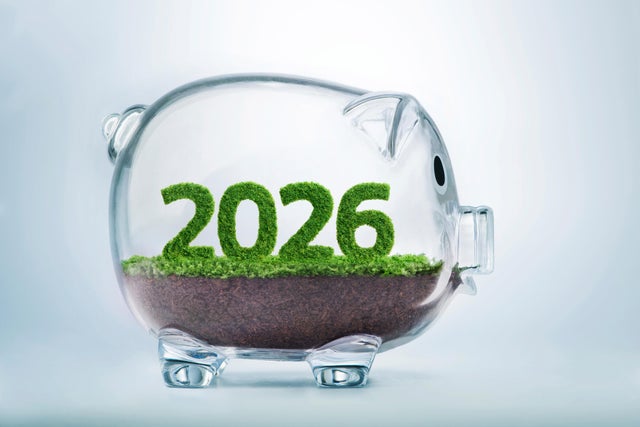Will a high-yield savings account be worth opening in 2026? Here's what experts say.
Interest rates on high-yield savings accounts were soaring a few years ago with some online accounts reaching 6%. But now, after a shift in Federal Reserve policy, those savings rates have started to fall. Should the Fed continue on its current path, it may opt to cut its federal funds rate again, which would mean even lower rates on savings accounts as we get into 2026. And that now appears likely, with many experts expecting another 25 basis point cut to the federal funds rate when the central bank meets again in December.
But does that mean a high-yield savings account won't be the best place for your money next year? And are you better served for looking for alternative homes for your money now, before the new year? We asked some experts about the value of opening this unique savings vehicle in 2026. Below, we'll detail why it may (and may not) make financial sense.
See how much interest you could be earning with a top high-yield savings account here.
Why a high-yield savings account could be worth opening in 2026
For the most part, most experts say a high-yield savings account will still be worth it in the new year, especially if you open one at the beginning of 2026, not the end.
For one, any rate declines that happen will be gradual — not significant or sudden. Historically, the Fed only makes small cuts to its rate each time — usually between 25 and 50 basis points. If this trend continues, savings account rates will fall, but those are only expected to be slight drops and generally only only around the time of the Fed meetings.
"Opening a high-yield savings account in 2026 can still be a smart move, especially while rates remain relatively elevated," says A'Jha Tucker, project manager for consumer deposits at Georgia's Own Credit Union. "As the Federal Reserve continues to lower the Fed funds rate, high-yield savings rates are also expected to decline. That makes now a good time to get it while the getting is good."
On top of this, there tends to be a pretty large gap between traditional savings account rates and the rates offered on high-yield savings accounts. And even if rates decline next year, experts predict that "sizable gap will likely persist," says Shana Hennigan, chief business officer at savings marketplace Raisin. This is particularly true with accounts offered by online banks and credit unions.
"Even as overall interest rates decline, we expect online banks and fintech platforms to remain competitive, while larger financial institutions look to cut rates as quickly as possible to reduce their borrowing costs," Hennigan says.
Finally, if economic uncertainty, widespread layoffs and inflation continue into next year, high-yield savings accounts will become even more attractive when compared to other financial products. Not only will they allow consumers to earn a competitive yield on the money they keep stowed away, but they offer unfettered, penalty-free access to those funds, too (unlike certificates of deposit accounts which typically charge an early withdrawal fee if you need your money before the account hits maturity).
"In a climate of prolonged economic uncertainty, the earning potential from a high-yield savings account can provide a cushion against unexpected financial shifts," Tucker says. "These accounts offer a safe, accessible way to grow savings while maintaining liquidity, which is especially valuable during periods of market volatility or when consumers want to avoid riskier investments."
Get started with a top high-yield savings account online today.
Why a high-yield savings account may not be worth opening in 2026
One reason you may not want to open a high-yield savings account next year is that interest rates on these accounts are likely to drop in the new year.
"High-yield savings accounts will likely fluctuate and go down if the Federal Reserve continues to lower interest rates," says Frank Davis, president of New Era Financial. "With inflation expected to ease further in 2026, many experts anticipate the Federal Reserve could lower interest rates two or three times by the end of the second quarter in 2026."
And since high-yield savings accounts have variable rates, that means rates won't just fall on new accounts — but on already-existing ones, too.
"One of the main drawbacks of a high-yield savings account is that its interest rate is tied to the Federal Reserve's rate, so it's subject to change," Davis says. "If your income is dependent on maintaining a higher rate of return, you may struggle when rates come down."
Another downside of these accounts in 2026 is that other financial products are likely to offer higher earnings. CDs, in particular, are probably going to be more attractive rate-wise experts say. They also let you lock in current interest rates for months, years, or, sometimes, even a decade, protecting you against future Fed moves.
As Hennigan explains, "If rates do continue to decline, locking in a CD early in the year could protect your returns."
The bottom line
If you have the ability to leave money untouched for an extended period of time, a CD may allow you to earn more interest than a traditional or high-yield savings account in the new year. It can also help you lock in interest rates and maintain them — even if the Fed continues to make moves.
If, on the other hand, you need your cash ready and available, a high-yield savings account or money market account, which both allow for more liquidity, is likely the better option. "If you need your money liquid and accessible within 48 hours or less, a high-yield savings account is a better option than locking up your money in a CD," Davis says.
Talk to a financial professional if you're not sure which savings product is best for your goals and risk appetite. They can help you make the best decision for your money.
